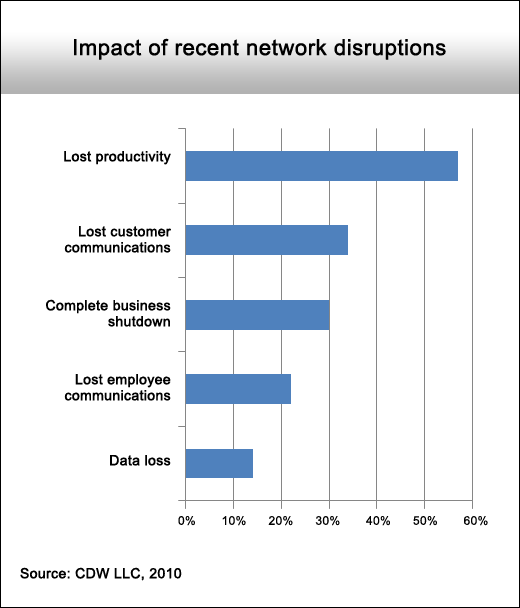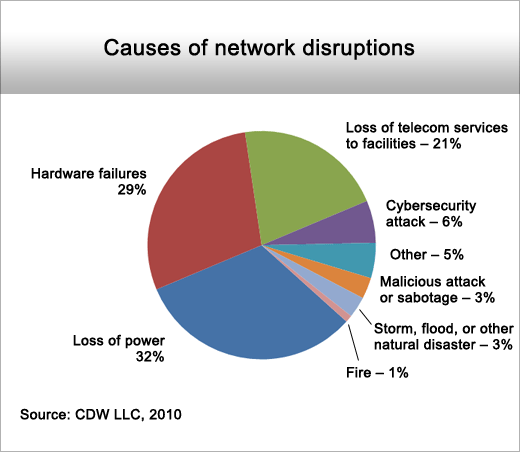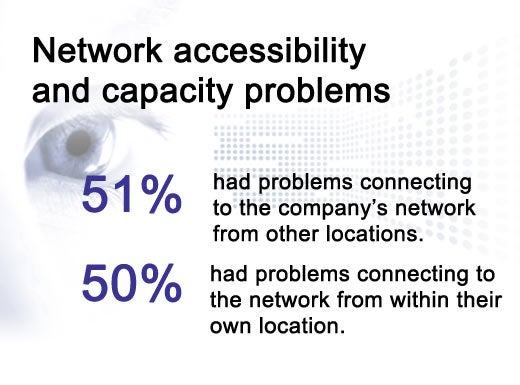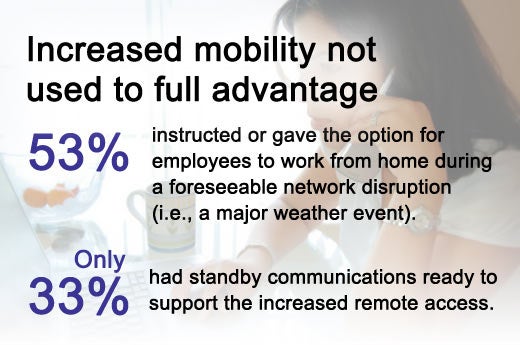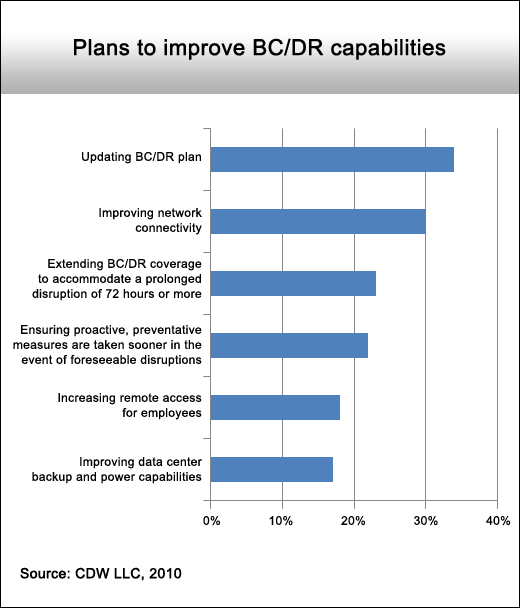The data and communications network is the foundation of most businesses today; damage it, and the business is temporarily crippled – or worse. Most businesses take measures to protect themselves from a network outage but still face disruptions for myriad reasons – loss of power, loss of telecom services, cybersecurity attacks, natural disasters, and more.
CDW surveyed 200 IT managers at medium and large businesses that experienced a significant network disruption in the past 12 months, to examine how these disruptions affected their businesses. They asked about the business impact of the disruptions and what, if anything, the company was doing to improve their continuity of operations as a result of their experience.
This slideshow highlights their findings.
Click through for results from a straw poll conducted by CDW on business disruptions and network resiliency.
Most responding businesses (82 percent) report that, before their disruptions, they were confident that their IT resources were prepared to support local business operations effectively in the event of a disruption. In contrast, 97 percent said their businesses suffered detrimental effects from network disruptions over the past year.
More than half of businesses (57 percent) reported productivity loss as their top negative effect of the disruption. Significant percentages also felt the pinch on customer communications (34 percent), internal communications (22 percent) and in data loss (14 percent).
Any solid BC/DR plan can address these top three causes, which account for 82 percent of all disruptions. So, while most businesses say they are prepared for a network disruption, many are not ready to deal with the most common issues that cause network disruptions.
Regardless of the failures that cause network interruptions, businesses need to focus on improving network accessibility and capacity, especially at times when the network is strained.
These gaps indicate that lines of communication are crossing. If employees are instructed to work from home, they must be able to access the necessary tools and resources they need to get the job done remotely. If the number of remote workers increases significantly during bad weather or other disruptions, the business may need supplemental bandwidth and access ports standing by. Such reserve capacity or facilities should be tested regularly as well.
In the wake of recent network disruptions, many businesses are taking steps to improve their disaster recovery capabilities, but more can be done. The key for any business is to test its BC/DR plans regularly; an effective test will determine whether the company is adequately prepared for all but the most severe disruptions.




